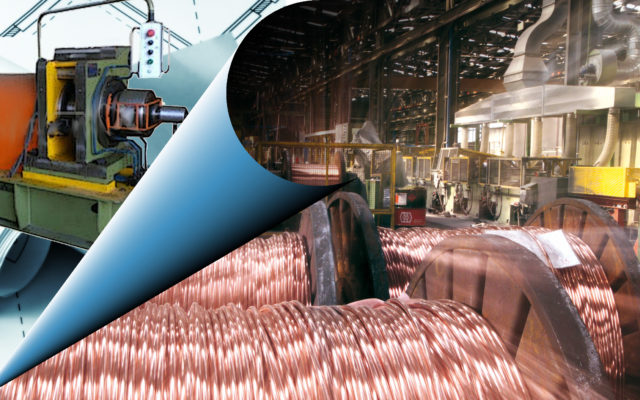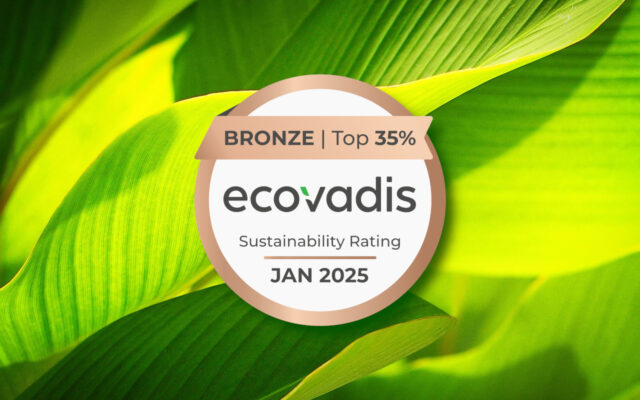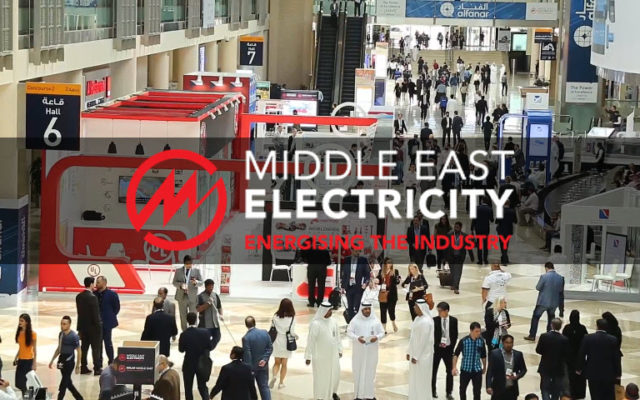Technical challenge in the Norwegian fjords: De Angeli Prodotti enabled a high-voltage electric crossing thanks to its innovative solutions.
In the high-voltage power transmission sector, the complexity of a project is not measured solely by the length of the line or the amount of energy transmitted. The true challenge often lies in the variables dictated by the installation site: the mechanical characteristics of specific materials, extreme climatic conditions, and the logistics of installation and maintenance. This is exemplified by a recent project in which De Angeli Prodotti played a leading role in the construction of a high-voltage crossing over the Norwegian fjords, commissioned by Statnett, the Norwegian TSO. The line connects two mountains separated by the sea and required the use of special connectors and next-generation fittings, as well as a high level of technical coordination. Two of our colleagues, Vittoria Bottin and Davide Peroni, closely followed the entire process—from production to on-site installation. This article is based on Vittoria’s account following her visit to the installation site.
Summary:
- 1. Power transmission in Norway
- 2.The project: large-diameter conductors and advanced materials
- 3. Logistics: site access and dedicated roads
- 4. Installation of conductors: explosive fitting technology
- 5. Inspections and aerial monitoring
- 6. Challenges encountered and operational solutions
- 7. The role of De Angeli Prodotti: a system partner
- 8. Statnett and its commitment to Norway’s electrical development
- 9. Conclusion
1. Power transmission in Norway
The transmission of electricity across the Norwegian fjords represents one of the most complex engineering challenges in the European high-voltage landscape. These 420 kV crossings require spans significantly longer than standard continental ones — often exceeding 3,000 meters — which place high mechanical stress on both conductors and suspension systems. Additionally, the extreme environmental conditions—persistent humidity, large seasonal temperature fluctuations, and particularly strong wind gusts—necessitate the use of materials with high resistance to stress and corrosion. In particular, the heavy ice load that forms on the conductor demands the selection of highly resilient materials. Lastly, operational logistics are further complicated by the lack of direct access routes and the need to use helicopters or temporary roads specifically built for transporting components and equipment. In this context, every phase of the process—from design to installation—requires a high degree of coordination among manufacturers, utilities, and installation companies to ensure the highest levels of reliability and safety for the infrastructure, both during installation and throughout operation.
2. The project: large-diameter conductors and advanced materials
The project involved the design and supply of conductors with a diameter larger than the standard used in most European backbones. The goal was to increase energy transmission capacity while reducing line losses, all without compromising the mechanical reliability of the span. This requirement made it necessary to develop a conductor with advanced structural characteristics:
- Special high-strength steels with excellent corrosion resistance, making them suitable for the Norwegian climate, characterized by extreme thermal cycles and persistent humidity
- Very tight dimensional tolerances to ensure compatibility with the explosive fitting systems used by Statnett.
- Full traceability of the production cycle, with non-destructive testing and conformity certifications at every stage.
The result was a product that combines mechanical strength, fatigue resistance, and maximum operational reliability on critical transmission lines.
3. Logistics: site access and dedicated roads
One of the most complex aspects of the project was the installation logistics. The morphology of the Norwegian fjords certainly does not allow for easy access: the lines run between rocky peaks and deep inlets in areas with no existing roads.
To ensure the supply of materials and access to the towers, Statnett designed and built dedicated road infrastructure. These routes, with high load-bearing capacity, equipped with drainage systems and reinforcements to support the passage of heavy vehicles carrying conductors and lifting equipment. This phase required several weeks of preparatory work before installation operations could begin. Throughout the entire process, safety management and environmental protection were absolute priorities.
A fun fact: these temporary roads are often repurposed after the project, becoming trails for mountain biking and hiking in the mountains!
4. Installation of conductors: explosive fitting technology
The installation phase involved the use of highly specialized jointing technology: explosive fittings, supplied by a leading Norwegian manufacturer.
This technique involves inserting the conductor into a metal sleeve coated with a calibrated explosive material. The ignition triggers an instantaneous and controlled deformation of the fitting, which compresses around the conductor to create a perfectly tight, mechanically strong, and low electrical impedance joint.
Compared to traditional crimping systems, explosive fittings allow for uniform pressure distribution on large diameters and reduce the risk of micro-cracks that could compromise long-term performance.
During the visit, Vittoria Bottin and Davide Peroni observed the installation of planned conductors, closely following the sequence of safety procedures and the post-explosion inspection tests.

5. Inspections and aerial monitoring
In such a context, operational monitoring goes beyond ground-level observation. The construction site was supported by:
- drone systems for real-time visual inspection;
- helicopters used to check the alignment of the spans and to transport equipment to hard-to-reach areas.
At the end of the installation, aerial surveys are carried out for inspections and photographic documentation, serving as input for technical and knowledge databases.
6. Challenges encountered and operational solutions
From both a technical and management standpoint, the project required addressing several complex challenges. The climate in the Norwegian fjords is highly unpredictable, with alternating periods of persistent rain (exceeding 2,500 mm annually in some areas), strong wind gusts, and temperatures close to freezing even in summer (the average summer temperature is around 10 °C). This made it necessary to adopt a modular planning approach for operational phases, closely aligned with daily weather patterns, which were constantly monitored to identify suitable weather windows for work.
The challenging climate requires minimizing installation time to limit the exposure of conductors to adverse weather before final tensioning. To achieve this, all necessary components were prepared on-site in advance, and multiple work teams were coordinated to operate simultaneously. Quality control was also immediate and efficient, with essential tests carried out even at height.
These operational experiences confirmed the importance of an integrated approach that combines production capability, application know-how, and on-site presence.
7. The role of De Angeli Prodotti: a system partner
This project is a concrete example of how De Angeli Prodotti positions itself not just as a component supplier, but as a system partner capable of:
- customizing the product based on strict specifications;
- providing technical support for line design;
- assisting the customer during testing and installation phases.
Our experience in international transmission projects has developed over years of collaboration with major European TSOs, who recognize the added value of a single point of contact capable of managing the entire cycle—from preliminary design to technical advisor during stringing and installation.
8. Statnett and its commitment to Norway’s electrical development

Statnett’s commitment to strengthening the transmission network is clearly outlined in the 2022/2023 Annual Report and the Grid Development Plan — two strategic documents that define the development priorities of Norway’s electrical system. Key objectives include reinforcing high-voltage backbones and constructing new complex crossings — such as suspended lines over the fjords — which are essential to ensure supply security and increase the transmission capacity of renewable energy produced inland, particularly from hydroelectric plants.
With over 1700 fjords in Norway, crossing them in a safe manner is essential. Strengthening the capacity between Aurland and Sogndal ensures:
- increased energy transfer capacity from hydroelectric production areas;
- reduction of bottlenecks during peak demand;
- improved supply security for the western coast.
The Annual Report provides a comprehensive overview of the main ongoing projects, highlighting the strategic importance of these infrastructures within the framework of the national energy transition. The Grid Development Plan outlines the areas of intervention and the related investments aimed at strengthening connections between generation areas and consumption centers, reducing grid congestion, and improving the overall resilience of the transmission system.
9. Conclusion
The crossing of the Norwegian fjords is more than just an engineering achievement: it is proof that Italian manufacturing quality, innovation, and the ability to collaborate across borders can deliver excellent results even in the most extreme conditions.
For De Angeli Prodotti, this experience reaffirms its role as a reliable partner for major European power transmission operators, with a forward-looking and sustainability-driven vision.
The high-voltage sector is undergoing a transformation. The growth of renewable generation and the new demands of European interconnection are driving the need for:
- advanced technologies;
- the use of large cross-section conductors;
- logistical solutions for increasingly challenging environments.
De Angeli Prodotti continuously invests in research and development to respond to these trends. The experience gained in Norway will serve as a valuable technical and human asset for our company, forming the foundation for new international projects that can play a crucial role in the energy transition.


